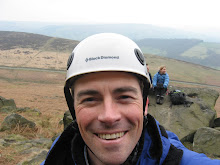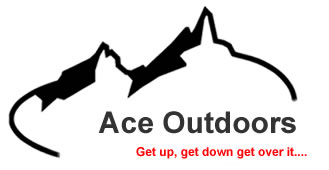







DAY5 - IML Final Day / Debrief
The morning session of the course investigated the roles and required decisive actions required for leaders in the sudden and unexpected event of being in the wrong place at the wrong time and everyone in the group gets avalanched! (or if you come to assist others in a group burial)
The training scenario involved one team on the hill acting the role of the victims placing out objects, in the debris field or others to become the rescuers. Each team had the opportunity to observe what was happening and then review the others' performance.
The main learning points became clear to organise an effective search needs good planning, direction of members in to searchers, diggers and probers and one person to direct the actions of the team to quickly find victims when at the scene.
In the afternoon, a summary was given of each of the days on the course and an overall evaluation of the training and if required individual coaching points and a verbal action plan given from the guides delivering the course for the IML winter syllabus.

 The second day of the IML winter training course was more focused on gathering useful local sources of information from French guidebooks and weather forecasts. The aim was to be able to plan a suitable snowshoeing day for a group of clients.
The second day of the IML winter training course was more focused on gathering useful local sources of information from French guidebooks and weather forecasts. The aim was to be able to plan a suitable snowshoeing day for a group of clients. 
 Today, was the first day of the IML winter training course being held near to the town of Grand Bornand in the French alps.
Today, was the first day of the IML winter training course being held near to the town of Grand Bornand in the French alps. In September 2008 I passed the International Mountain Leader or IML (summer) Assessment in Switzerland. Over the next five days, I will be away on a training course for the winter part of the qualification, which looks closely at the skills required to lead groups in alpine winter conditions using snow shoes as a means of getting around. The training course is being held in the French Alps.
In September 2008 I passed the International Mountain Leader or IML (summer) Assessment in Switzerland. Over the next five days, I will be away on a training course for the winter part of the qualification, which looks closely at the skills required to lead groups in alpine winter conditions using snow shoes as a means of getting around. The training course is being held in the French Alps.
 The car temperature gauge read -7.5 degrees as we parked the car in the Ogwen Valley! The winter weather was fantastic in Wales today.
The car temperature gauge read -7.5 degrees as we parked the car in the Ogwen Valley! The winter weather was fantastic in Wales today.After our little lakeside stop, we continued on to the ladder stile at Bwlch Tryan, and then onward and upwards to the first proper summit of the day - Gylder Fach (vach). We passed the crowds balancing on the cantiler stone and continued to our lunch stop at Gylder Fawr. The view from here was particalrly spectacular emcompassing all the major Welsh ranges in the distance as the sun started to set. We watched paragliders floating in the blue sky down Cwm Cneifio against the mountain backdrop.
We continued a little further along the ridge now starting to gently drop down to Llyn y Cwn, marking our homeward route back to Ogwen Valley down the Devil's Kitchen path. As we walked down to the valley the natural water runnels had frozen on the backwall of the cwm and climbers where out on the icy cascades climbing near to the "Devil's appendix" (see photo above).
After a short break, to view the Idwal slabs and the upper walls there we returned past the lake to tea shop just as the day drew to a close.
For more information on this walk and others like it. Please contact us via our main website
Next training event is on:
(Snowdonia Hill Walking and Navigation Workshop Friday 30/01/2009 to Sunday 01/02/2009.)
We hope to see you there.....
PJ
